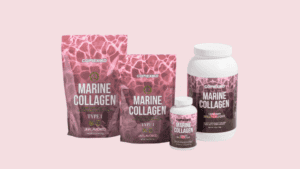Last Updated on January 25, 2025 by Packoi Team
It is unfortunate that whenever someone has a business idea, packaging is always the last thing they think about, not to mention biodegradable packaging. The package in which customers receive your product speaks a lot about your brand and is an excellent determinant of what happens next to your business. “More leads, customer retention, and increasing sales” or “no returning clients and reduced sales.”
Considering the marketing use of packaging, it has to be effective in preserving, protecting, and marketing your product while building the brand. Attractive packaging has the potential to entice more customers toward your product and, as a result, increase sales. First impressions often matter, so most companies invest a lot in creating comely packaging.
It is worth noting that a company can forge aesthetic packaging that is both functionally effective and eco-friendly.
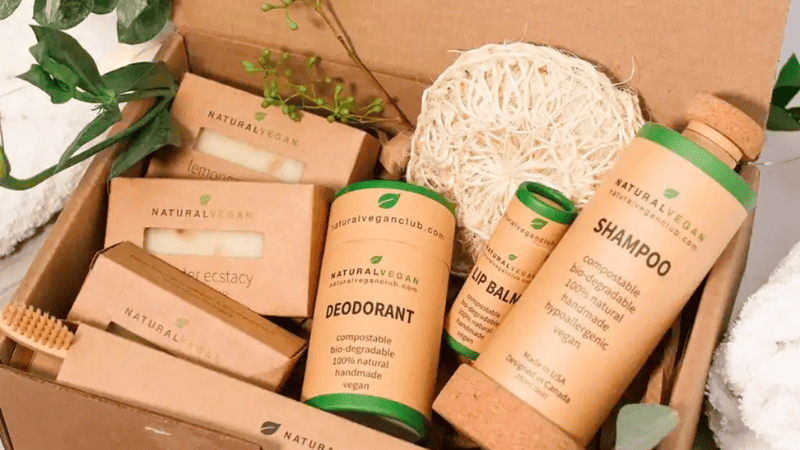
In the modern world, customers are more environmentally aware. They are interested in “appealing” packaging and eco-friendly packaging from brands that are compliant with environmental consciousness.
Plastic packaging is the most popular packaging option worldwide because it is durable and cheap to produce. However, plastic use comes with costly health and environmental risks. These plastic materials can react with other substances to produce toxic chemicals, causing severe health issues for customers.
Additionally, plastic materials decompose at a slow rate, increasing the chances of plastic pollution if they are not disposed of accordingly. Plastic is one of the significant concerns about in-ground and ocean pollution, and we do not have enough time to waste to change our lifestyle.
Plastic cannot be our only option when choosing packaging material. There are a considerable number of alternatives to plastic packaging. Because of this, conservationists are encouraging business owners and companies to consider more eco-friendly packaging rather than plastic options.
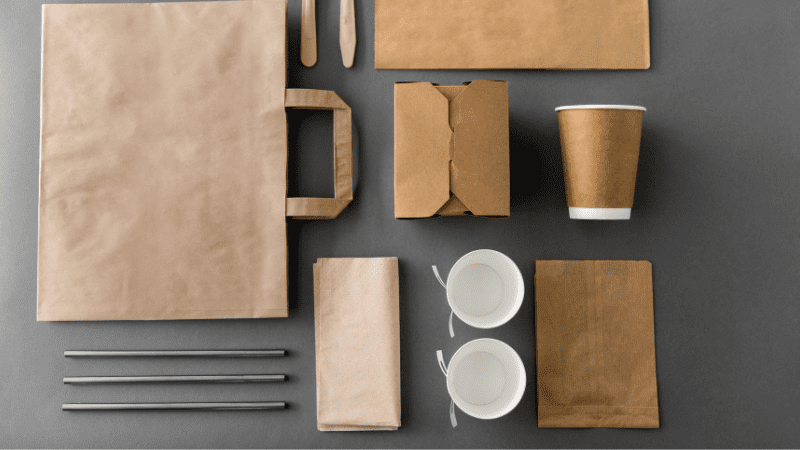
Taking that into perspective, the most sustainable packaging is biodegradable. Perhaps you are still wondering what this biodegradable packaging could be and what materials it is made from. In simple terms, biodegradable packaging, as the name suggests, is made from natural materials that living organisms can break down into non-harmful new materials.
This article will look extensively at biodegradable packaging, its importance and benefits, some examples, and a guide to help you shift to biodegradable packaging.
Ready to Get Custom Packaging for Your Business?
start with a low minimum order quantity
What Is Biodegradable Packaging?
Biodegradable packaging is manufactured from materials or biopolymers from living organisms. These biopolymers create biodegradable plastics that microorganisms like bacteria, fungi, and algae can break down. This means they are safer and faster to degrade than conventional plastic materials.
So, when we talk about biodegradable packaging, we refer to packaging material made of organic compounds. The packaging materials are safe and can undergo decomposition without having a detrimental impact on the environment.
Some biodegradable materials used to create eco-friendly packaging include corn starch, sugar cane, paper, cardboard, and other biopolymers. Although the wood used to manufacture paper and cardboard is naturally available, sometimes we do not consider the two eco-friendly. It requires cutting down trees on the rise, undermining environmental conservation efforts.
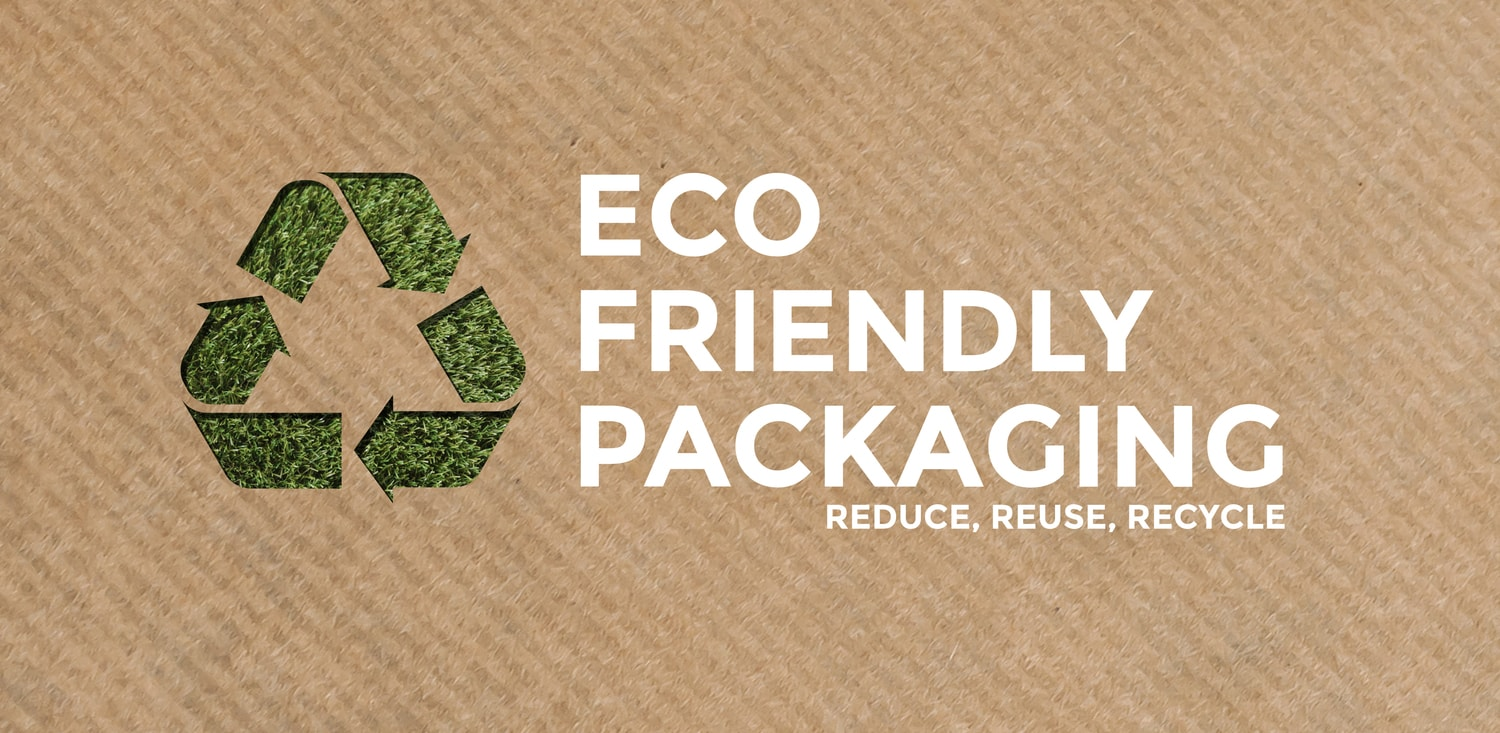
Sometimes, the term biodegradable is interchangeably used with compostable. The two terms have a notable difference in meaning: compostable materials have to decompose into nutrient-rich compost within three months, while biodegradable materials may take an extended period to decompose into natural elements that can also facilitate plant growth.
Biodegradable and compostable materials have more environmental benefits after decomposition than traditional plastics.
Although biodegradable and compostable packaging is better than traditional plastic, compostable packaging is more desirable. This is because compostable packaging materials decompose faster, which is a more eco-friendly option.
Why Is Biodegradable Packaging Important?
By using biodegradable packaging, you are promoting environmental sustainability. Product packaging using biodegradable materials reduces pollution since there are no harmful compounds to the environment.
Biodegradable packaging is convenient for a wide range of products. Food packaging using biodegradable materials has been adequate and ensures people consume goods without the risk of harmful impacts.
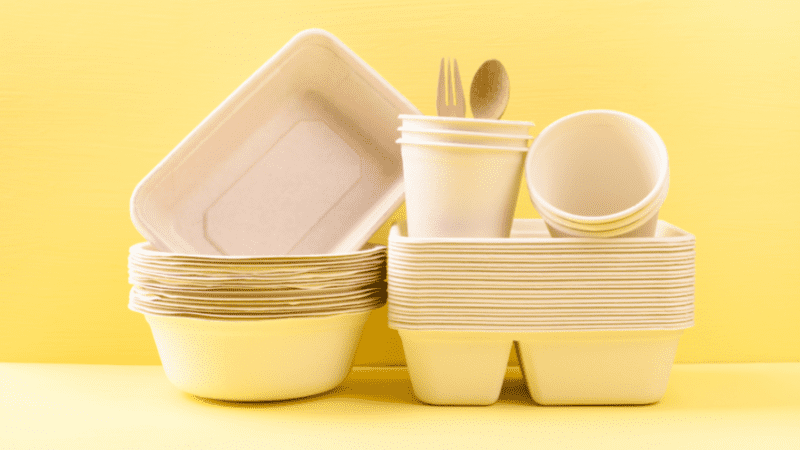
Waste management has been a major environmental issue, especially in water bodies. Plastic waste in landfills and water bodies is high, and it is high time we get a prolonged all-system approach to address land and water pollution. Biodegradable packaging is one of the necessary measures that can save our environment.
Unlike plastic, biodegradable packaging is all-friendly. While traditional plastics produce toxic chemicals for the environment, biodegradable packaging does not jeopardize human health or wildlife because it is natural and decomposes into nutrient-rich compost, which improves the environment by facilitating plant growth. So, next time you go shopping, consider purchasing products in biodegradable packaging to keep your environment healthy.
Ready to Get Custom Packaging for Your Business?
start with a low minimum order quantity
How to Tell If It Is Biodegradable Packaging?
It is worth looking at the features that can distinguish biodegradable packaging from others. We have seen many companies claim their packaging is biodegradable, but perhaps we are still doubting their claims. So, what makes packaging biodegradable?
Here is a list of factors for sustainable or biodegradable packaging:
- Material: biodegradable packaging is made of natural fabric obtained from living organisms. The material used is not harmful to the consumer or environment.
- Biodegradable packaging does not contain any traditional plastic. Plastics produce harmful elements, which is not one feature of biodegradable packaging.
- Biodegradable packaging is sustainable because it naturally breaks down into valuable nutrients for plants after being disposed of in landfills. So, its usefulness does not end in packaging goods. It is sustainable throughout its life cycle.
9 Different Types of Biodegradable Packaging Materials
As a substitute for plastic packaging, biodegradable packaging comes in many eco-friendly packaging materials. Plastic pollution has given us a slew of environmental threats that leave us with no option but to look for better alternatives that will help reduce environmental impact and give us a more sustainable world.
Ultimately, the choice of biodegradable consumer packaging for a brand depends on the needs and budget of the particular user.
Herein is a list of some types of environmentally friendly packaging materials you should consider using in your brand:
1. Cardboard
Cardboard is a widely recyclable packaging material that is dear to most households. You probably use this product packaging material every day. Are you familiar with the different types of cardboard? Cardboard comes in two different types, each with its functionality. Carton board: flexible and flat, packed with smooth sides for branding. It is more convenient for cosmetics and cereal packaging.
Corrugated cardboard is a darling option for many companies due to its lightweight, durability, and cost-effectiveness. Corrugated cardboard is commonly used for shoeboxes and other oversized items that require a practical cushion effect.
2. Paper
Paper packaging is mainly associated with food packaging and luxurious cosmetics. It is produced from recycled paper or wood from forests. In the case of sourcing from the forest, paper and cardboard are not eco-friendly unless made from recycled magazines, articles, and other used materials.
With quality printing, you can create paper packaging with clear finishes that sell and are kind to the environment. It is important to note that paper is easy and inexpensive to recycle since less energy is required for recycling.
3. Cornstarch
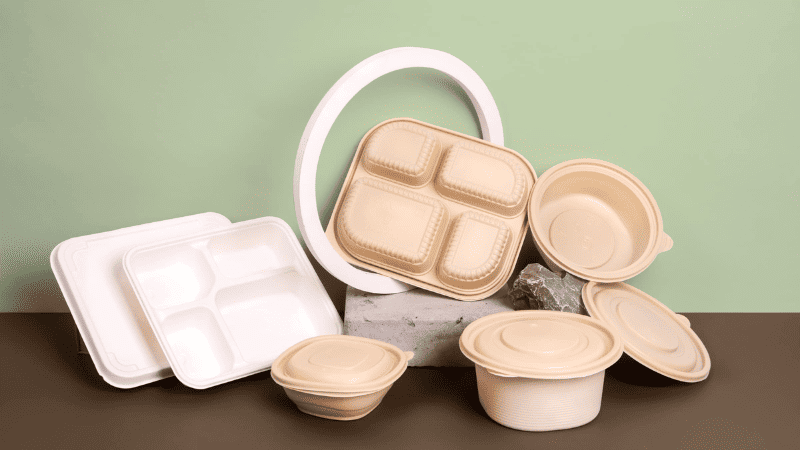
Recycling unwanted corn starch into useful bioplastic for packaging is one of the noble ideas of the day. Biodegradable plastics like polylactic acid from cornstarch are made of biomasses with no toxins. Corn-based packaging is cheap, easy to produce, and environmentally sustainable. However, humans and animals use corn as food, so using cornstarch to create biodegradable bags is disadvantageous and unnecessary.
4. Seaweed
Agar, the material found in seaweeds and algae, is the primary material for making seaweed packaging. Seaweed and algae are two readily available sustainable raw materials. From these raw materials, you can get an attractive and environmentally friendly option in seaweed packaging.
5. Hemp
This is a highly biodegradable material sourced from the cannabis plant. It can create resilient, versatile, and utterly biodegradable packaging. However, hemp is expensive, and its biopolymers are currently commercially unavailable.
6. Mushroom Roots
Mushroom packaging can be an eco-friendly alternative to traditional plastic bags. It is created using agricultural waste mixed with mycelium as the binding material. This is eco-friendly packaging that biodegrades into practical elements that support environmental health.
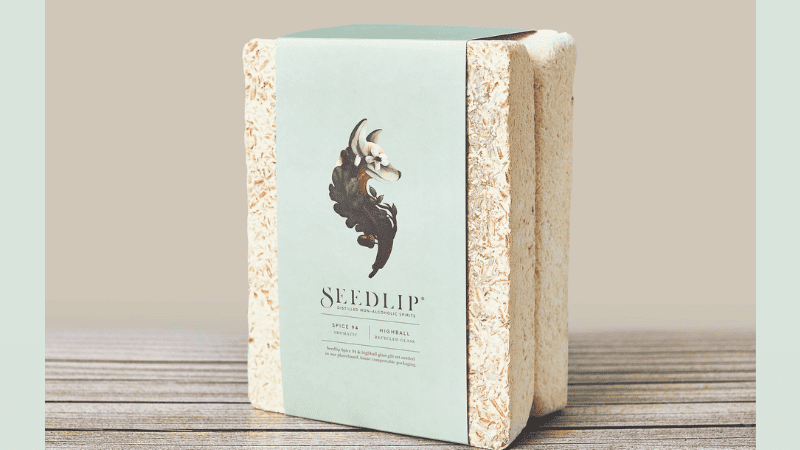
7. Kraft Paper
Kraft paper is a 100 percent biodegradable material made from recycled wood pulp, so it is more robust than standard paper. It is used for packaging, wrapping specific items, bundling items, and void filling. It can be recycled and used for other purposes.
8. Compostable
Compostable packaging has recently become popular in many businesses. The materials associated with creating compostable plastics include corn, sugarcane, beets, and more plant-based materials. When disposed of well in the compositing system, this compostable packaging should be degraded into carbon dioxide and other non-harmful elements beneficial to the environment within 90 days.
9. Home Compostable
Home compostable packaging is another form that microorganisms can break down in the home composting system into more eco-friendly substances. Renewable resources like compostable plastics from plant materials are the primary inputs for producing compostable home packaging.
Although it looks like traditional plastic, home compostable packaging, once disposed of in a home composting system, biodegrades into carbon dioxide, water content, and other biomasses because it is made of natural materials. This packaging option offers a perfect alternative to traditional plastic in package design. If implemented well, compostable home packaging can significantly reduce the amount of plastic waste in landfills.
Home composting is an effective way that requires a simple approach of putting home compostable packaging into a home compost to reduce environmental impacts and create a more sustainable environment. As stated herein, if composted well, this packaging biodegrades at low temperatures into nutrient-rich materials that help build healthy soils, improve plant growth, and support a sustainable ecosystem.
Ready to Get Custom Packaging for Your Business?
start with a low minimum order quantity
How Biodegradable Packaging Benefits Your Business
Consumers are more inclined to buy brands concerned with sustainable packaging while expressing interest in making eco-friendly packaging decisions. They will probably purchase from a business whose identity and values meet their customers’ needs. As more customers show interest in environmental sustainability, biodegradable packaging presents companies with an excellent opportunity for growth.
That said, as we look deeper into the benefits, you will see that biodegradable bags are suitable for the environment and better suited for businesses to thrive. Below, we will list some examples of how biodegradable packaging may benefit your business:

1. Reduced Carbon Footprint
Businesses usually have financial goals and environmental ones when it comes to packaging. Environmental compliance is one of the factors companies strive to meet, and biodegradable packaging is a handy option. Manufacturing biodegradable packaging lowers the number of natural materials used, reducing wastage. Carbon footprints also reduce waste or overuse of resources in the manufacturing process. This is a beneficial way for companies to become environmentally compliant.
2. No Harmful Toxins or Microplastics
As an alternative to traditional plastic bags, biodegradable packaging is free of harmful substances. The recycled content or biodegradable materials decompose into valuable materials that have all the benefits to the environment. Plastic bags, on the other hand, slowly break down into toxins and microplastics that are harmful to humans, animals, and wildlife.
Considering the business perspective, informing customers of a business that does away with traditional packaging and chooses biodegradable packaging will be an easy choice to make. Customers will choose goods packaged using eco-friendly packaging over plastic packaging. That presents an opportunity for businesses to attract customers and make more sales by doing away with traditional packaging for a more sustainable alternative.
3. Ease of Disposal
A business that uses easy-to-dispose product packaging will certainly thrive in a healthy environment. Biodegradable, compostable, and recyclable packaging are some options that prove to be convenient alternatives to customers regarding disposal. When disposed of well, their waste is not a severe eyesore in a home composting system because it takes less time to decompose.
Biodegradable packaging is the preferred option because it decomposes without other resources. Customers will more likely go for products in biodegradable packaging and will not mind paying more since it serves to reduce environmental impact.
4. Brand Image
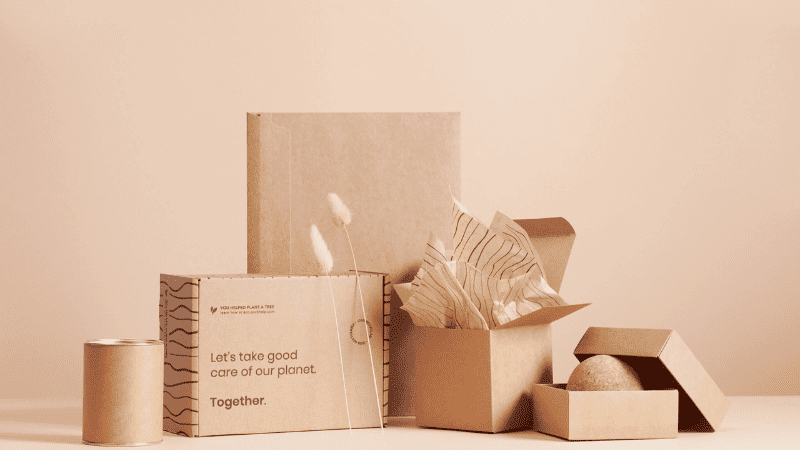
Every day, people are becoming more concerned about conserving the environment. Everyone wants to properly manage waste and reduce the environmental impact caused by plastic packaging. More people do not prefer brands that use recycled materials. By embracing biodegradable packaging, businesses earn a reputable image among their customers.
5. Versatility
Does your business need a versatile packaging option? I expect a big yes here. Biodegradable packaging comes with versatile solutions capable of serving any industry, depending on its design. It matters less the line of products you are dealing with. Whether it is clothing, food, cereals, electronic devices, or even beauty products, there is always a biodegradable packaging option to fit your line(s) of products.
6. Sustainability
Materials used to manufacture biodegradable packaging are reusable and recyclable. After unpacking your product, you can recycle biodegradable packaging into other vital outcomes for noble purposes. Not to forget, biodegradable packaging does not go to waste. Even after disposing of it, the packaging will decompose into carbon dioxide and other organic matter, enhancing soil fertility, plant growth, and environmental sustainability.
Biodegradable Packaging Examples In Action
- Ice Cream Packaging: An excellent example of biodegradable packaging is all-natural packaging (ice cream cups). This is a perfect example of food packaging at Tilly’s
- T-shirt Subscription in Cardboard: An innovative way of fitting a top (t-shirt) and a book (gift) in one cardboard box.
- Reusable bag: Puma expresses its mandate towards eco-friendliness by delivering shoeboxes in reusable bags. The reusable bag is manufactured using bioplastics.
- Newspaper egg carton: Folded newspaper into a square carton and a piece tucked at the bottom to protect the eggs from falling. A strip of card is wrapped vertically around the formed carton to hold everything firm while functioning and giving product information.
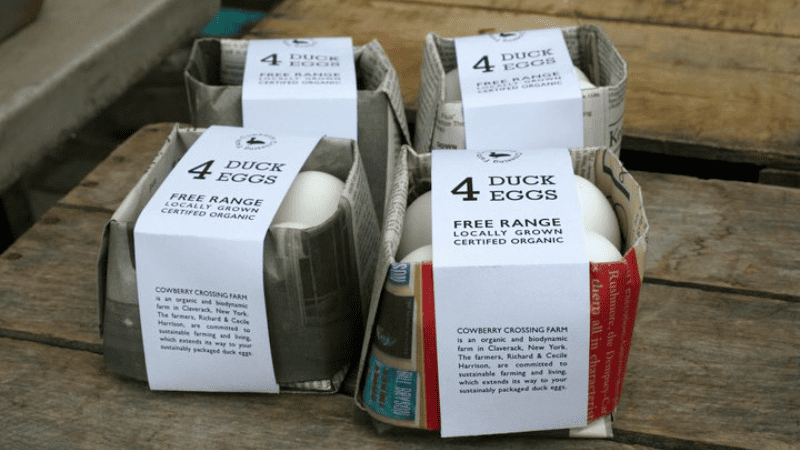
6 Tips When Considering Biodegradable Packaging
You probably now understand biodegradable packaging in detail and its benefits to the customer, the business, and the ecosystem. It is time to consider replacing your plastic packaging with a more sustainable alternative with comprehensive benefits for your company and the environment. Here are some tips to help you navigate through biodegradable packaging:
1. Cost and Budget
The cost of acquiring or producing biodegradable packaging should be within your budget. There are biodegradable materials that are cheaper to acquire and recycle. Paper and cardboard do not require a lot of other resources to recycle or reuse. These two can be recycled using renewable energy generated from incinerated bioplastic polymers. The two are just a few examples of biodegradable packaging, but there is a wide range of options you can choose from depending on your budget and business needs.
2. Packaging Material
There are different biodegradable materials out there that you can use for your product packaging. However, the material you choose for your packaging depends on the nature or form of your product. Biodegradable packaging for clothes cannot be the same as powdered milk. So, be careful when choosing biodegradable packaging material to suit your line of products.
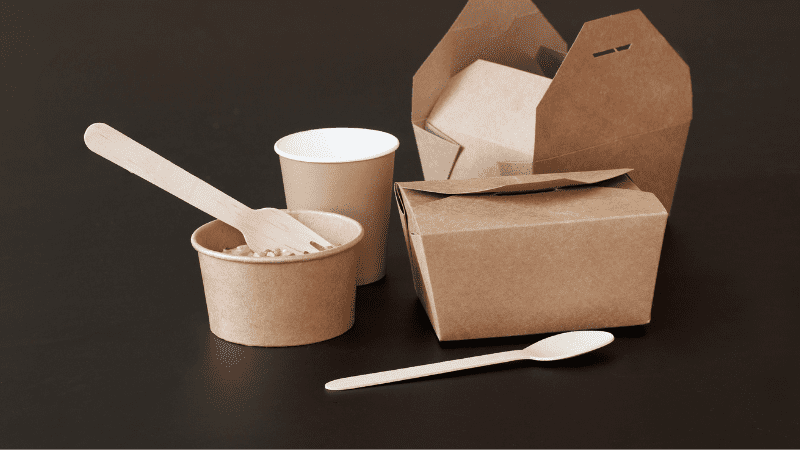
3. Printing and Branding Needs
Packaging design and printing are essential to any business. The first impression has a significant influence on the purchasing decisions of customers. It is, therefore, necessary to have biodegradable packaging that allows printing of the brand logo and other valid product features as a way of marketing. Packaging is always the “silent salesman,” and we cannot ignore that when it comes to biodegradable packaging.
4. Transport/Shipping Needs
The primary function of packaging is to store, preserve, and protect the product during shipping. Your biodegradable packaging should ensure end-users receive and find their ordered product intact after unboxing.
5. Functionality
Because it is biodegradable packaging, customers expect it to function beyond its primary purposes and ensure it serves them and the brand by promoting compliance with a clean environment. Additionally, they expect your biodegradable packaging to preserve and protect the product against losing value during shipping. Storage and shipping conditions may be unfavorable. If your product(s) require shipping to retailers and consumers, the biodegradable packaging should offer enough protection against impact damage to the product.
6. Sustainability
Environmental sustainability is critical when considering packaging materials to use with your products. Since customers prefer environmentally compliant brands, it is advisable to consider biodegradable packaging that is easy to dispose of and decomposes quickly.
A company that reuses packages and recycles waste packaging can reduce the costs of producing new biodegradable packaging. Also, if you can easily reuse and recycle biodegradable packaging, you can reduce waste in landfills. That is how your biodegradable packaging should be: reusable, reduceable, and recyclable.
Ready to Get Custom Packaging for Your Business?
start with a low minimum order quantity
Biodegradable Packaging and the Food Industry
Biodegradable packaging is a big thing to happen, especially when facing an eco-crisis in all corners of the world, both on land, water, and in the atmosphere. Waste management, high carbon footprints, and all kinds of pollution are here, and all these call for our strategic intervention to mitigate them. Biodegradable packaging is the first strategy we can use to achieve sustainability.
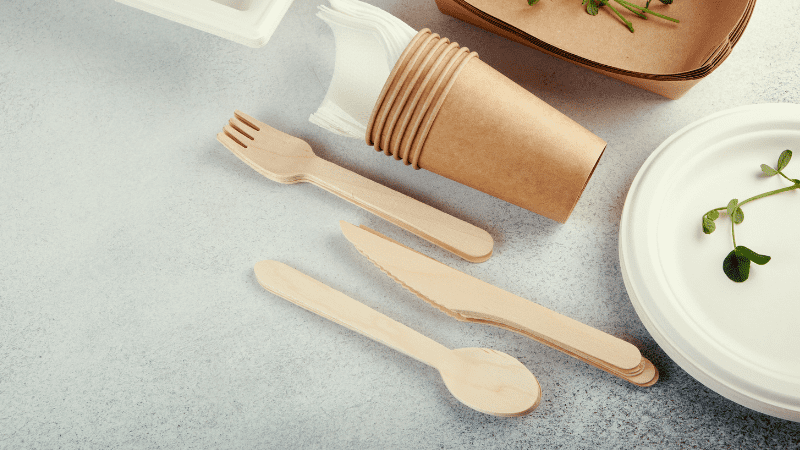
Food is entirely compostable and organic, but most of its packaging is not. When we switch to biodegradable packaging, the food industry can take advantage of the waste from our nutrient-rich packaging materials, direct it to compost, and use the nutrient-rich compost to cultivate and grow more food.
So, unlike plastic packaging, which has an adverse environmental impact, biodegradable food packaging can be a vital component of a cycle that uses waste to enhance food production. For this reason, we can all agree and recommend that the food industry should consider compostable packaging as its packaging solution so that we can reap benefits both in the environment, business, and food production.
Conclusion
Biodegradable packaging presents an opportunity for businesses to grow. Being compliant with protecting the environment against pollution is beneficial not only to the environment but also to businesses. In today’s world, where people are more environmentally conscious, you do not expect them to associate with companies that take measures to protect the environment.
Many people would want to associate themselves with brands that have, through actions, expressed their mandate to promote environmental sustainability and reduce their carbon footprint. Biodegradable packaging has provided a suitable alternative to plastics, and of course, it is highly versatile, with endless biodegradable packaging materials to serve every industry.
Make a Sustainable Environment for Business Success with Packoi
Environmental sustainability is crucial for the success of your business. Get suitable biodegradable packaging materials for your products, which is your true subscription to achieving a healthy environment.
Biodegradable consumer packaging will effectively eliminate waste if you embrace recycling and reusing most of your biodegradable packaging materials, like paper and cardboard. Avoid harmful materials like plastics, crude oil, and polystyrene foam, which are non-biodegradable and not environmentally friendly.
Packoi Printing is a design company dealing with packaging design and printing. You can get customized biodegradable packaging designs that align with your product and business needs. For attractive branding and packaging designs, contact Packoi Printing for more details or visit Packoi for more information.


